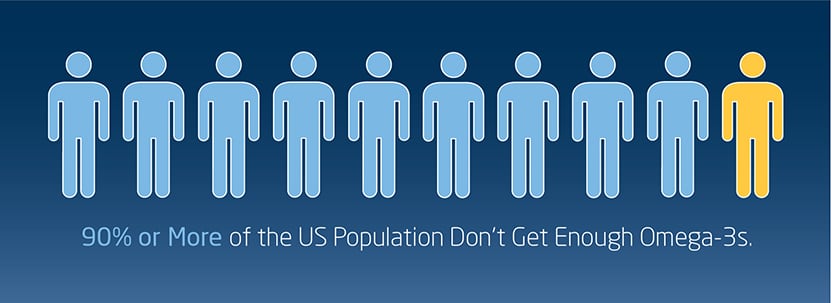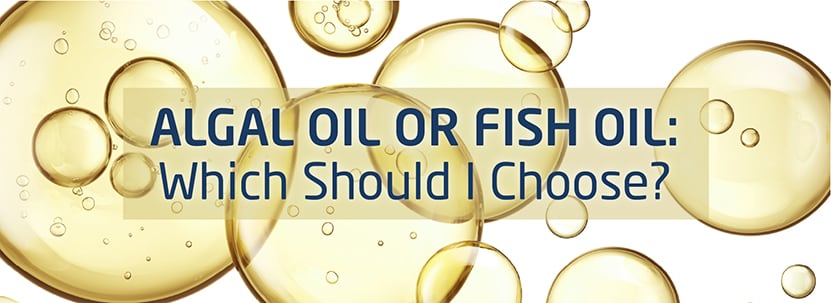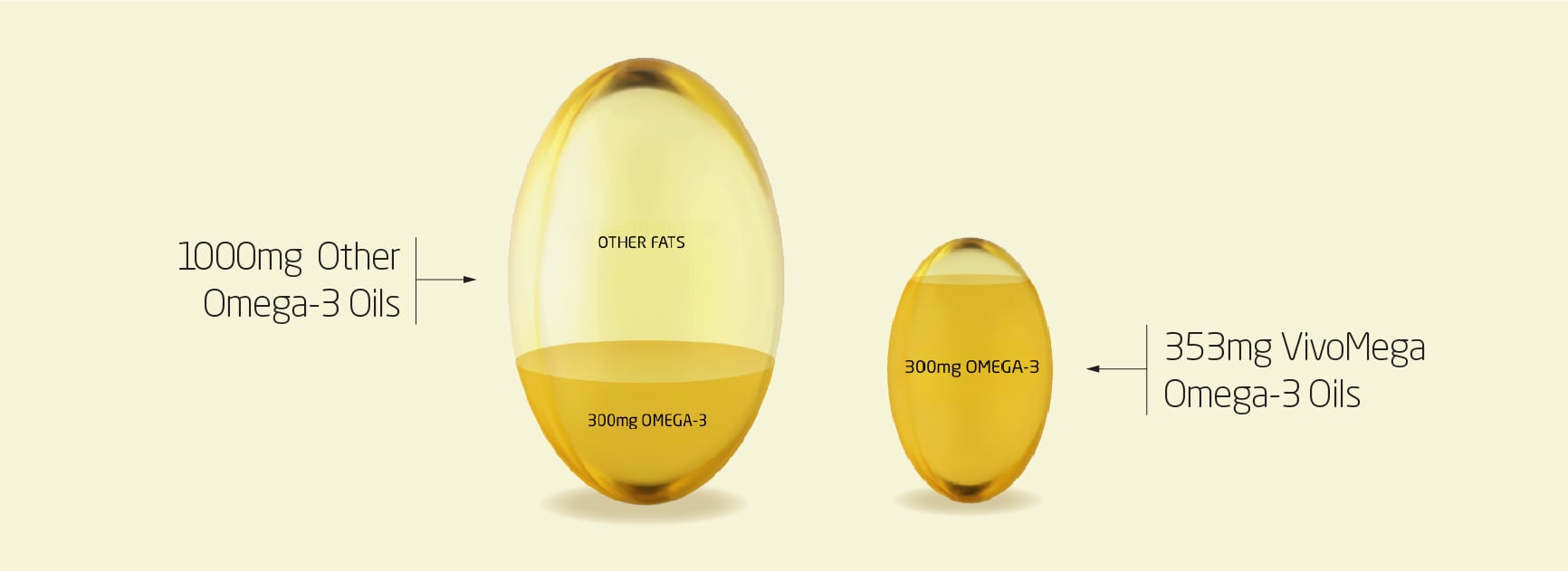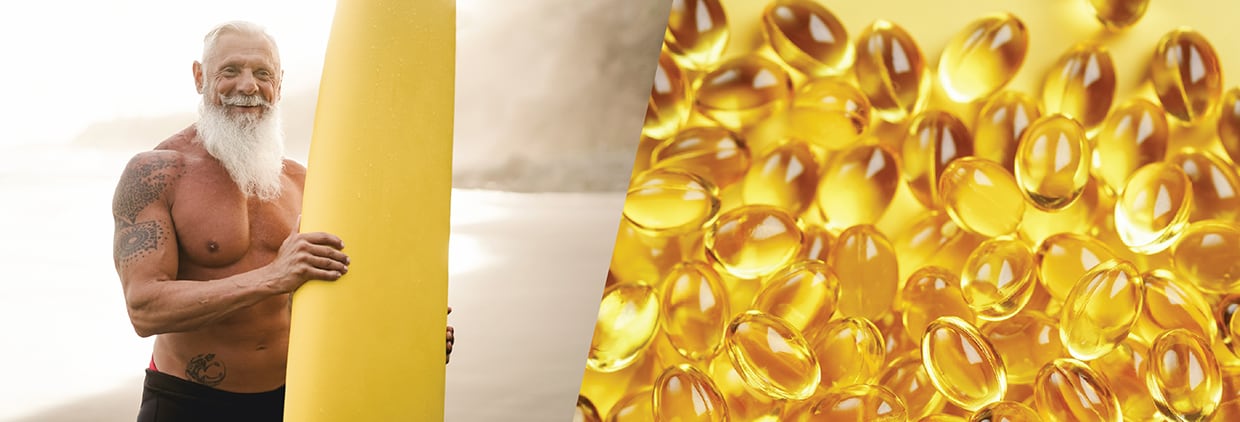Emerging science suggests that omega-3 fatty acids can play a significant role in slowing down biological aging.
It is no secret that consumers are seeking healthier years rather than just longer years. This new mindset has shifted consumer focus from halting chronological aging to lowering biological age.
Chronological aging is calculated by the number of years lived. Research has shown that aging is not a linear process. Aging is a complicated process characterized by various changes at the cellular level.¹ This change at the cellular level, along with the ability to measure it, is what is known as biological aging. Biological aging provides a more accurate measure of how the body ages. Leading researchers, such as Steve Horvath and others, have identified epigenetic clocks that utilize DNA methylation changes across the genome to quantify variations in biological versus chronological aging.²
Research has also shown that a healthy lifestyle can impact biological age. In fact, a new three-year study (published in Nature) on 777 people over the age of 70 showed that subjects who took 1,000 mg of algal omega-3s slowed down biological aging across several epigenetic clocks by up to four months.²
Why omega-3 supplementation is essential
A large body of evidence, including a newly published study in Nature, has shown that consumption of long-chain polyunsaturated fatty acids (LC-PUFAs), eicosapentaenoic acid (EPA), and docosahexaenoic acid (DHA), whether from diet or supplementation, can improve cardiovascular health, support healthy blood glucose levels, and contribute positively to neurodevelopment.³
While the benefits of omega-3s are well-documented, EPA and DHA levels are typically low to very low for individuals in most countries. It is estimated that over 85% of the global population and 90% or more of the US population don’t get enough omega-3s.⁴⁻⁵

Plain and simple, most people are not eating enough seafood and fish. The omega-3 index, a measurement tool that detects the levels of EPA and DHA in red blood cells, has also shown that most people in the US have levels of 4% or lower, putting them at a higher risk of a cardiovascular event.⁶⁻⁷
An omega-3 index of 8% or higher is ideal. In fact, studies have shown that a higher omega-3 index of 8% or more can increase life expectancy by up to five years compared to individuals with omega-3 index levels of 4%.⁸ What is equally astounding is that smoking while having ideal levels of omega-3s is the same as being omega-3 deficient.⁸ All of these point to why omega-3 supplementation is critical, be it fish or algal oils.
Algal oil vs. fish oil: Which one is better?
Omega-3 supplementation of 2,000 mg daily for 13 weeks has been shown to help achieve ideal omega-3 index levels (≥8%).⁹ Once ideal omega-3 index levels have been reached, the recommended daily consumption is 800 mg to 1,000 mg per day.
A 2025 study in the journal Nature demonstrated the reversal of biological aging with algal omega-3 consumption.² Beyond healthspan improvements, algal-based omega-3s have also shown benefits for maternal and infant health.¹⁰

The benefits of marine-based omega-3s (fish oils) are well-documented. Over 50,000 published studies, including more than 5,000 human clinical trials, have shown that consumption of omega-3s can improve heart, brain, eye, joint, and women’s health.¹¹ In addition, omega-3 consumption has also been shown to slow down muscle atrophy and support protein synthesis, making it an excellent option for sports nutrition formulations.¹²
While the science on both omega-3 sources is robust, questions still remain about which one is more beneficial. Considering EPA and DHA from fish and algal oil are chemically identical, the answer is that both are equally beneficial. In fact, a well-known study has shown that algal oil-based DHA is bioequivalent to salmon in providing DHA to plasma and red blood cells.¹³
GC Rieber VivoMega, a leading supplier of omega-3 concentrates, is helping to further educate consumers on this matter and provides brands with customized fish and algal oil options for today’s consumer.
Choosing omega-3 forms and dosages
Omega-3s, be it fish or algal oils, are available in different forms. The two primary forms are triglyceride and ethyl esters. Triglyceride is the naturally occurring form. It has been shown to be more bioavailable and provide greater stability, all key factors in helping support long-term consumer compliance. For many consumers, capsule size, slow results, and fishy burps are significant barriers to taking omega-3s.

GC Rieber VivoMega has introduced a new algal omega-3, A1060, in a highly concentrated triglyceride form, containing 100 mg EPA, 600 mg DHA, and 730 mg of total omega-3 fatty acids, to help address today’s consumer expectations and overcome common barriers. Unlike other triglyceride forms of omega-3s, GC Rieber VivoMega’s algal line of omega-3 oils is concentrated using SuperLight™ Technology, a proprietary process created to process algae oils with minimum exposure to heat, and offer superior oxidation protection.
For brand and contract manufacturers, this means a smaller capsule size (with highly concentrated omega-3s), a better taste and smell experience, lower costs, and more possibilities for creating new product formats.
Currently, there is only a recommended daily allowance for alpha-linolenic acid (ALA), but not EPA and DHA. Supplementing with 1,750 mg or more per day for 13 weeks is recommended if an individual aims to transition from the deficiency zone to an ideal omega-3 index zone of 8% or higher. Over the lifespan, depending on the health benefits, omega-3 dosage levels range from 500 to 1,000 mg.
Formulating a new line of healthy aging supplements
Healthy aging is a booming category within the dietary supplement industry. Projected to be the fastest-growing condition through 2028, healthy aging, and longevity are the top consumer trends of 2025.¹⁴⁻¹⁵ According to a McKinsey survey, 70% of consumers in the US and the UK bought more products and services to support healthy aging and longevity than ever before.¹⁶ Seen as the Swiss Army Knife of healthy aging benefits, from early development into senior years, premium, high-quality omega-3s can:
- Regulate mood and support cognitive health as chronological age increases.¹⁷
- Slow down the progression of Age-Related Macular Degeneration (AMD) and help improve visual function.¹⁷
- Contribute to the normal functioning of the heart, triglyceride levels, and blood pressure.¹⁷
- Help manage inflammation due to exercise.¹⁷
- Increase muscle mass and endurance capacity.¹⁷
- Support the body’s natural immune responses.¹⁷
- Support maternal and infant health.¹⁰
GC Rieber VivoMega’s sustainably sourced fish and algal oils help brands position themselves to capture a considerable share of the healthy aging market by providing best-in-class sensory profiles and efficacy.
Request a sample of VivoMega A1060 today and formulate for the future.
References
- Duan, R.; et al. Epigenetic clock: A promising biomarker and practical tool in aging. Ageing Research Reviews. 2022; 81.
- Bischoff-Ferrari, HA.; et al. Individual and additive effects of vitamin D, omega-3 and exercise on DNA methylation clocks of biological aging in older adults from the DO-HEALTH trial. Nat Aging. 2025 Mar;5(3):376-385.
- Murphy, R. A..; et al. Long-chain omega-3 fatty acid serum concentrations across life stages in the USA: an analysis of NHANES 2011-2012. BMJ open. 2021; 11(5), e043301.
- Ciesielski T. H. Global Access to Uncontaminated Omega-3 Polyunsaturated Fatty Acids Requires Attention. AJPM focus. 2025; 4(4), 100341.
- Richter, C. K.; et al. Total Long-Chain n-3 Fatty Acid Intake and Food Sources in the United States Compared to Recommended Intakes: NHANES 2003-2008. Lipids. 2017; 52(11), 917–927.
- Harris, W. S.; et al. The Omega-3 Index: a new risk factor for death from coronary heart disease?. Preventive medicine. 2004; 39(1), 212–220.
- Rittenhouse, M.; et al. Optimization of Omega-3 Index Levels in Athletes at the US Naval Academy: Personalized Omega-3 Fatty Acid Dosage and Molecular Genetic Approaches. Nutrients. 2022; 14(14), 2966.
- McBurney, M. I.; et al. Using an erythrocyte fatty acid fingerprint to predict risk of all-cause mortality: the Framingham Offspring Cohort. The American journal of clinical nutrition. 2021; 114(4), 1447–1454.
- Walker, R. E.; et al. Predicting the effects of supplemental EPA and DHA on the omega-3 index. The American Journal of Clinical Nutrition. 2019; 110(4), 1034-1040.
- Baker, E. J.; et al. Omega-3 LC-PUFA consumption is now recommended for women of childbearing age and during pregnancy to protect against preterm and early preterm birth: Implementing this recommendation in a sustainable manner. Frontiers in Nutrition. 2024; 11, 1502866.
- GOED. Omega-3 Basics.
- McGlory, C.; et al. Omega-3 fatty acid supplementation attenuates skeletal muscle disuse atrophy during two weeks of unilateral leg immobilization in healthy young women. FASEB journal: official publication of the Federation of American Societies for Experimental Biology. 2019; 33(3), 4586–4597.
- Arterburn, L. M.; et al. Algal-oil capsules and cooked salmon: nutritionally equivalent sources of docosahexaenoic acid. Journal of the American Dietetic Association. 2008; 108(7), 1204–1209.
- Polito, R. Conditional demand. Nutrition Business Journal. Changing Need States Issue.
- Euromonitor International. What Are the Top Consumer Trends in 2025?
- McKinsey & Company. The trends defining the $1.8 trillion global wellness market in 2024.
- VivoMega. Did you know that Omega-3 fatty acids EPA and DHA are crucial to human health and our wellbeing?





